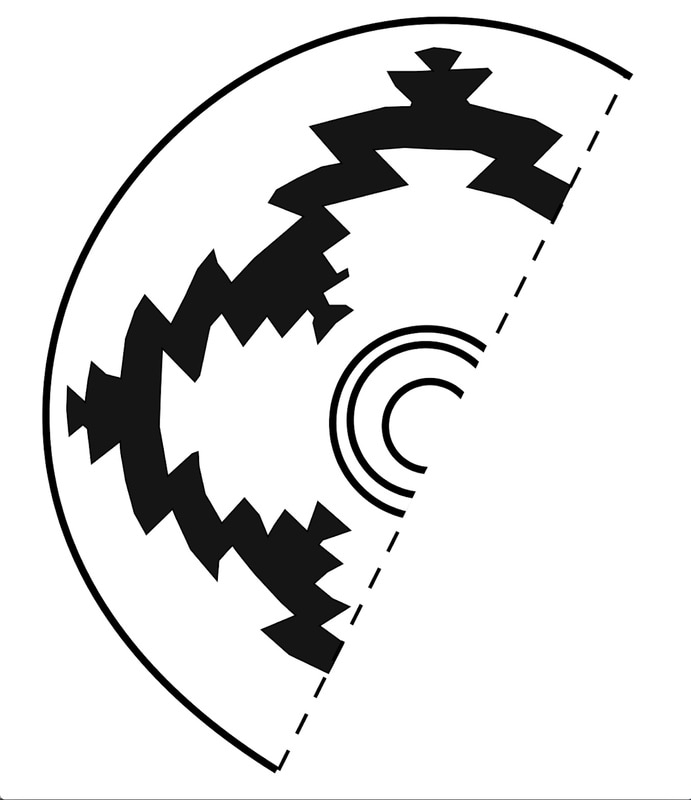Looking Back: the Basketmaker II Origin of Motif 1 Reduced and Joined Forms
While this study is focused on Basketmaker III black-on-white bowls and bowl sherds, in the context of Motif 1 it is now going to look back to Basketmaker II woven textiles - specifically those from White Dog Cave in Navajo County, Arizona. This site, located 50 miles west of the study area, was excavated in 1916 by the Peabody Museum of Harvard University (Samuel James Guernsey and Alfred Vincent Kidder, Basketmaker Caves of Northeastern Arizona: Report on the Explorations, 1916-17, Papers of the Peabody Museum of American Archaeology and Ethnology, Harvard University, Vol. VIII - No. 2, Cambridge, 1921). Woven bags and baskets recovered from the cave are illustrated by black-and-white drawings and photographs in the Basketmaker Caves report, and by color photographs on the Peabody Museum Collections Online website. Examination of both these sources has resulted in the identification of seven Basketmaker II bags and baskets that depict Motif 1 in the Reduced and Joined forms. The White Dog Cave artifacts push the creation of Motif 1 back into the Basketmaker II period; based on the radiocarbon date obtained from one bag (16-9-10/A2790), the Reduced form was in existence by 190 B.C. +/- 85 years.
[Color photographs of these and five other Motif 1 textiles can be seen on the website: Peabody Museum of Archaeology and Ethnology at Harvard University, Collections Online. In the "quick search" box type in any of the following catalog numbers: 16-9-10/A3217.1; 16-9-10/A2906; 16-9-10/A3093; 16-9-10/A2790; 16-9-10/A2882; 16-9-10/A2883; 16-9-10/A2884.]


